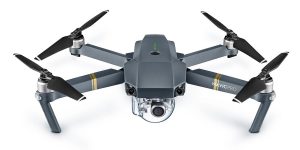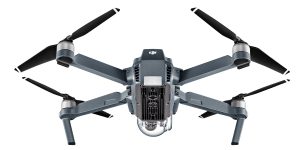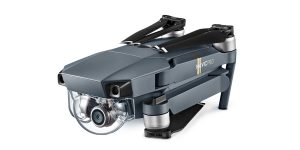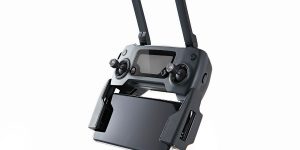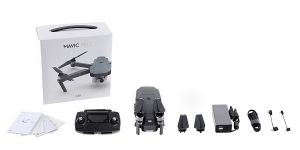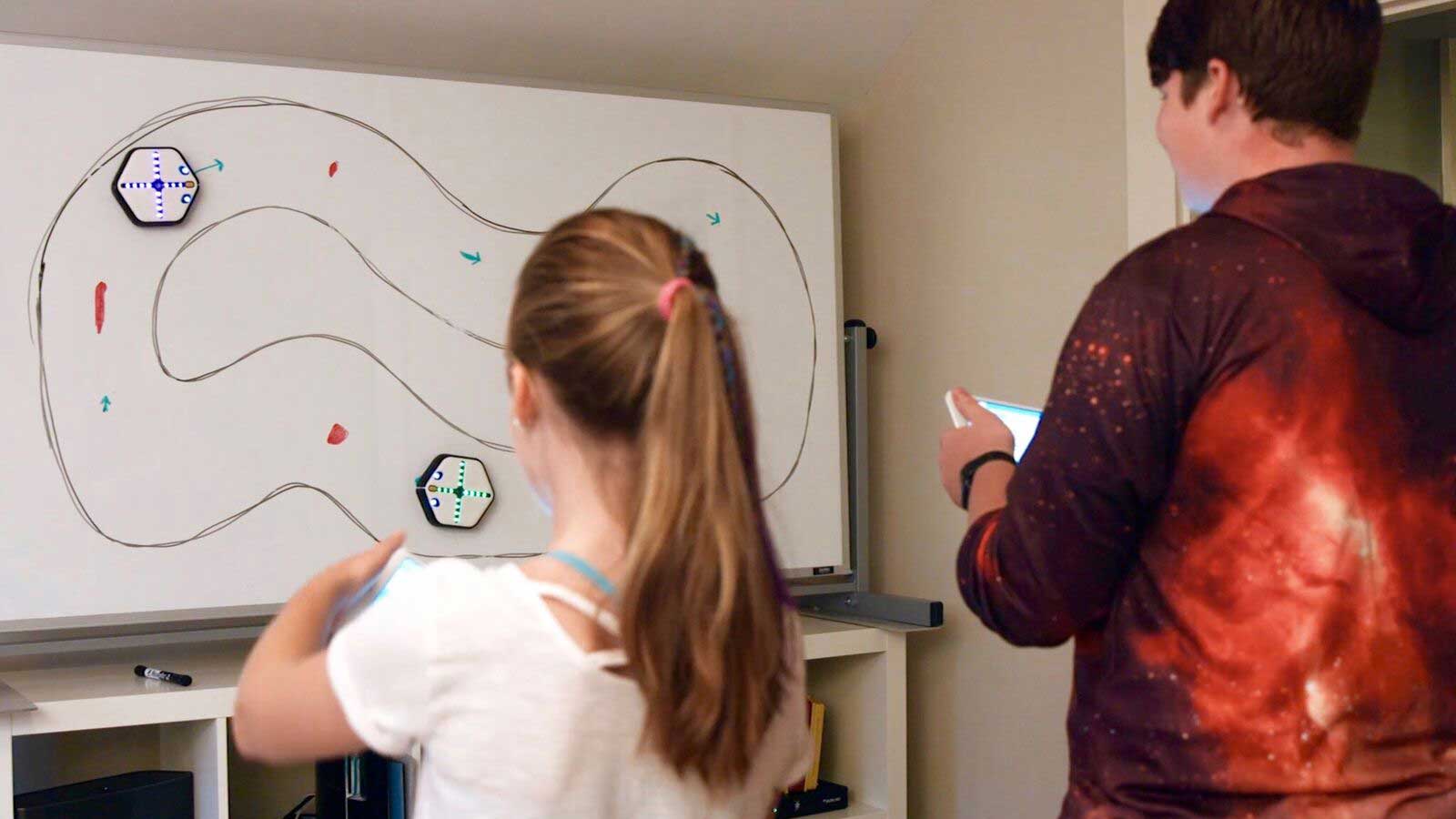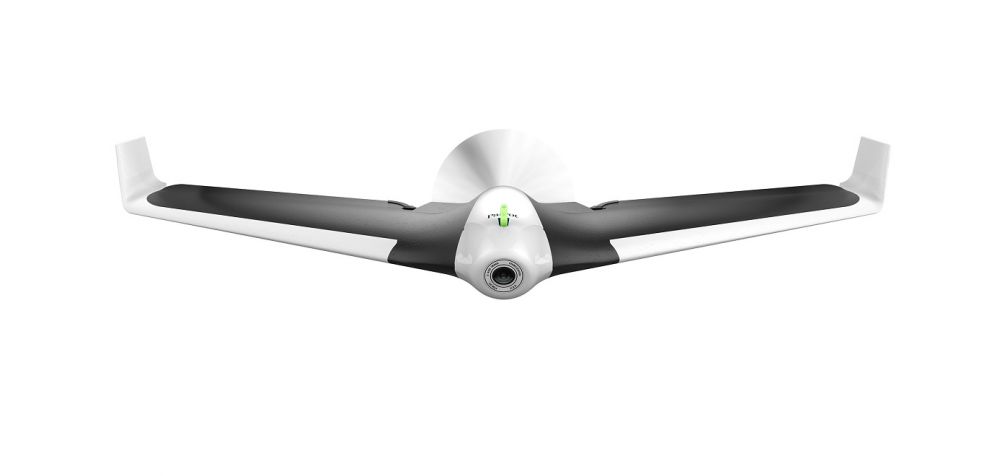DJI unveiled today their much anticipated Mavic Pro camera drone, which offers the company’s uncompromized imaging capabilities in a very compact foldable package that doesn’t even require a dedicated backpack. It may be small but the specs are quite impressive since the Mavic Pro trumps out even the Phantom 4 in certain aspects such as flight time, processing power, autonomous flight and obstacle avoidance capabilities, as well as communication range.
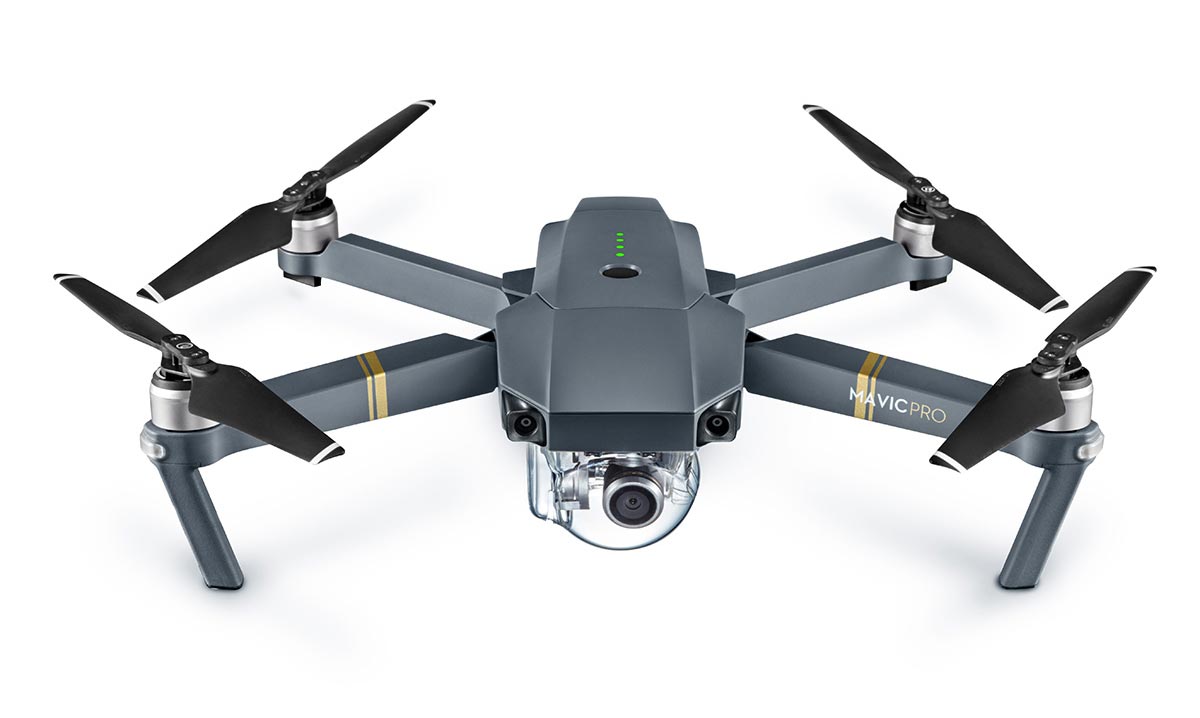
Judging by its size, ease of operation and price tag the Mavic Pro can be considered as an upper entry level drone, addressing the needs of first time fliers or active sports persons who want to shoot without too much hassle. However its feature set, versatility and high quality results can be very appealing to more experienced and even professional users.
Similar to other drones in DJI’s lineup you can operate the the Mavic Pro using either a mobile device running the DJI Go mobile app, the dedicated gamepad style controller or both. The latter offers increased communication range of up to 7km or 4.3 miles, thanks to the new OcuSync system. While it can be used standalone, the controller only integrates a small segment LCD for displaying telemetry data, and therefore a mobile device is required to display the 1080p live feed from the drone. The holder can accomodate most phones and phablets and comes with standard microUSB, USB 3.0 and iPhone Lightning connectors.
Live video can also be viewed using the DJI Goggles, also introduced at the New York press conference yesterday. These feature twin 1080p screens covering about 85 degrees FOV for an immersive first person experience. Two of them can be connected to stream video from one drone. There are however no details about pricing and availability just yet.
Mavic Pro makes flying safer with autonomous operation, obstacle avoidance and gesture recognition
A key feature of the Mavic Pro drone is packaging. The drone folds down to incredibly compact dimensions, being only slightly larger than a standard half a liter water bottle. Well maybe a bit bulkier, nevertheless it fits into the palm of your hand.
Despite its small form factor the Mavic Pro packs the whole array of sensors usually found in a Phantom 4 and some more, offering increased safety when flown in most conditions and environments, even indoors. Unlike the GoPro Karma, the Mavic Pro can fly autonomously by mapping its environment in high detail, relying not only on GPS and GLONASS but also on a vision positioning system and ultrasonic sensors in case it cannot acquire the signal.
Autonomous flight modes relying on satellite signal are similar to the Phantom 4 and include:
- Point of interest (POI) orbiting;
- Waypoint navigation – the drone follows an itinerary of predefined points;
- Course lock – forward flight vector is inline with the front of the drone;
- Home lock – forward flight vector intersects the home point;
- TapFly – simply set a point on the map and the drone will fly to it;
- Follow me – the drone follows the subject;
Obstacle avoidance technology is another highlight. The aircraft utilizes complex motion planning algorithms to efficiently navigate past obstacles, or completely stop and hover if such is not possible. It can keep constant ground altitude, for instance when going over a slope or a climb, and can return to its take-off position with great precision, while avoiding landing on water.
The drone relies on computer vision to a great extent, and employs machine learning to identify and autonomously track a variety of subjects such as humans, vehicles, pets and other distinguishable shapes, keeping these properly framed while filming or taking photos.
ActiveTrack technology also makes possible some very creative shots by means of more accurate autonomous flight modes such as:
- Terrain follow – the drone keeps constant ground altitude;
- Refined follow me mode;
- Profile – the drone flies besides the subject;
- Circle – the drone orbits the subject whether still or in motion;
- Spotlight – camera aims at the subject regardless of the flight path;
- Selfie – could not have been left out of course;
- Tripod – the drone moves with reduced speed and enhanced stability;
- Sports – enables the drone to fly with a maximum speed of over 65km/h or 40.6 mph, however it turns off obstacle sensing at this point;
- Gesture recognition – simply wave your hands to signal the drone start following you, or shape your hands like a frame and it will take a still photo.
As demonstrated at the New York event the gesture recognition mode works seamlessly, completely freeing the user’s hands. This I need to test out in real life to see how reliable it is.
The camera
So much technology would be a bit of a waste without a competent imaging unit and Mavic Pro’s main camera does not disappoint. Its 12.3 Megapixel sensor is coupled to a very low distortion 28mm wide angle lens (35mm equivalent) with f/2.2 aperture, two thirds of a stop faster than the unit on the Phantom 4, which should be adequate for low light footage.
It can capture video up to 4K UHD resolution and 60 Mbps bandwidth as well as JPEG and RAW (DNG) still shots. Just like its competitors it has high dynamic range (HDR) capture mode and records in MP4 and MOV with H.264 compression. It also offers a 2x digital zoom function which can be useful for video.
The camera is mounted to a gimbal which provides 3-axis stabilization while a removable transparent plastic bubble protects the entire assembly.
Pricing and bundles
All these features sound pretty expensive, so how much does the Mavic Pro cost. DJI have announced a base price of US $749 for the standalone drone. A bundle including the Mavic Pro and the remote controller will cost $999. A third package including two extra batteries, more propellers, shoulder bag, car charger and some other extras will set you back $1299. The latter two packages are on preorder on their product page. Shipping will start as of October 15 this year, and starting early November the Mavic Pro will also be available for ordering in Apple Stores.
DJI Mavic Pro vs GoPro Karma specs comparison
Launched only a week apart both models arguably compete for the same entry level drone market segment, holding very similar price tags. More than that both products focus on capturing high quality aerial footage. What sets them apart are their underlying philosophies, the Karma platform focuses on straightforwardness and can be regarded more as an accessory for Hero cameras. Mavic Pro goes the other way around employing lots of technology to make the experience as fun and easy as possible. Let’s take a look at their main specs.
| DJI Mavic Pro | GoPro Karma with Hero5 Black | |
|---|---|---|
| Dimensions – opened without rotors | 23.4×27×8.3cm (9.2×10.6×3.3 inch) | 30.3×41.1×11.7cm (12×16.2×4.6 inch) |
| Dimensions – folded | 19.8×8.3×8.3cm (7.8×3.3×3.3 inch) | 36.5×22.4×8.9cm (14.4×8.8×3.5 inch) |
| Propeller length | 20cm (7.9 inch) | 25.4cm (10 inch) |
| Weight RTF | 743g (26.2 oz) | 1700g (60 oz) |
| Gimbal | 3-axis stabilization | 3-axis stabilization, detachable – standalone usable |
| Camera (35mm equiv.) | 28mm wide angle, f/2.2, 78.8 deg. FOV | 17mm ultra wide angle fisheye, f/2.8, 122.6 deg. H FOV – optional, removable |
| Capture modes | 4K/UHD/2.7K 24-30p, FHD 24-96p, HD 24-120p, 12Mp JPEG/RAW photos | 4K/UHD 24-30p, 2.7K 24-60p, QHD 24-80p, FHD 24-120p, 12Mp JPEG/RAW photos – Hero5 Black |
| Top speed | 65km/h (40 mph) | 54km/h (35 mph) |
| Battery and flight time | 43.6Wh LiPo 3S, up to 27 minutes, 21 minutes avg. | 75.4Wh LiPo 4S, up to 20 minutes |
| Flight altitude | 5000m (16,404 feet) | 4500m (14,500 feet) |
| Wind resistance | 38.5km/h (24 mph) | 35.4km/h (22 mph) |
| Autonomous flight | Satellite and VPS based, obstacle avoidance, terrain follow, ActiveTrack | Satellite based |
| Connectivity and range | WiFi/OcuSync 2.4GHz, up to 7km (4.3 mi) | WiFi 2.4GHz, up to 3km (1.8 mi) |
| Remote control | Dedicated controller, DJI Go iOS and Android app | Dedicated controller with integrated screen, GoPro Passenger iOS and Android app |
| Price | $749 drone $999 drone + controller $1299 drone, controller, batteries, case, car charger, spares and extras | $799 drone, controller, gimbal, grip, case and spares – no camera $999 drone kit + Hero5 Session camera $1100 drone kit + Hero5 Black camera |
Well, this concludes my overview, hopefully you’ll find it helpful. Please check back for updated information.
Edited 30.09.2016: Added autonomous flight features, GPS positioning and changed flight range from 1 to 3km for the Karma.

